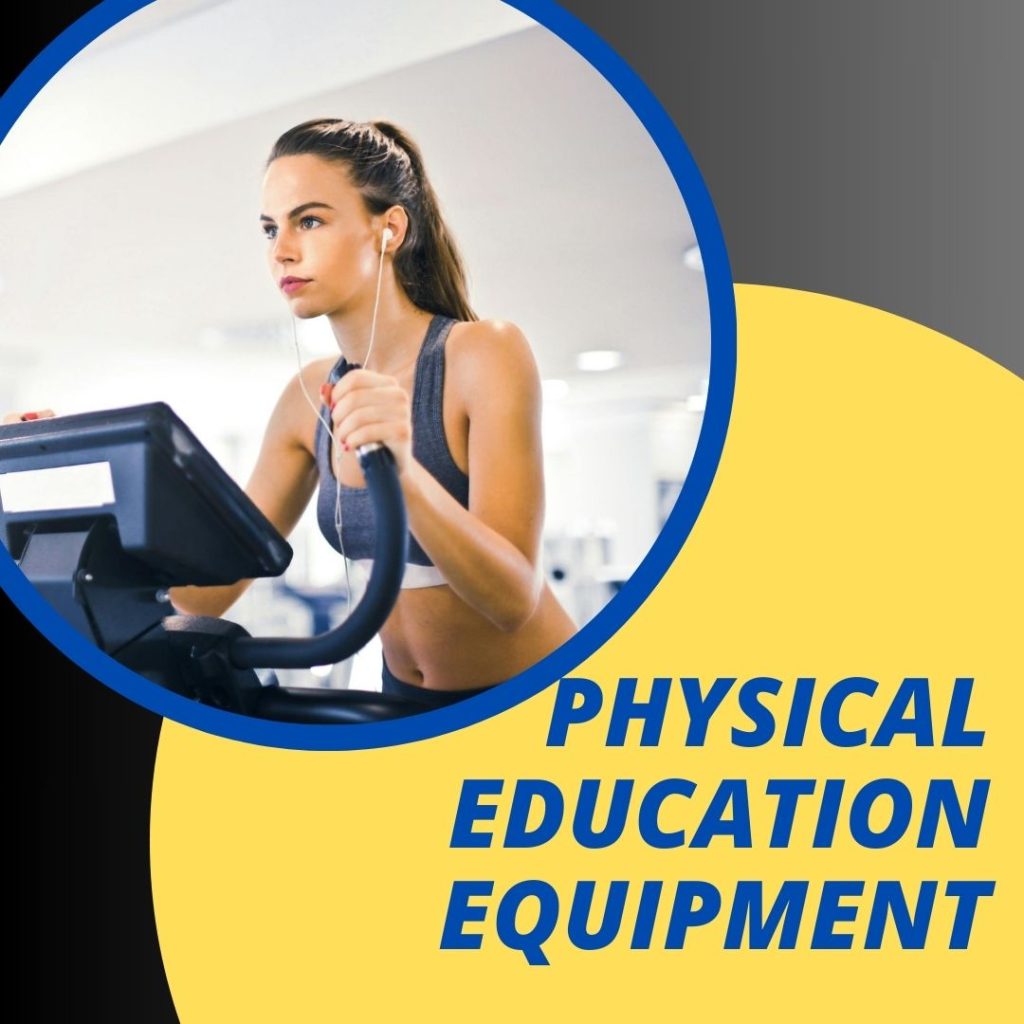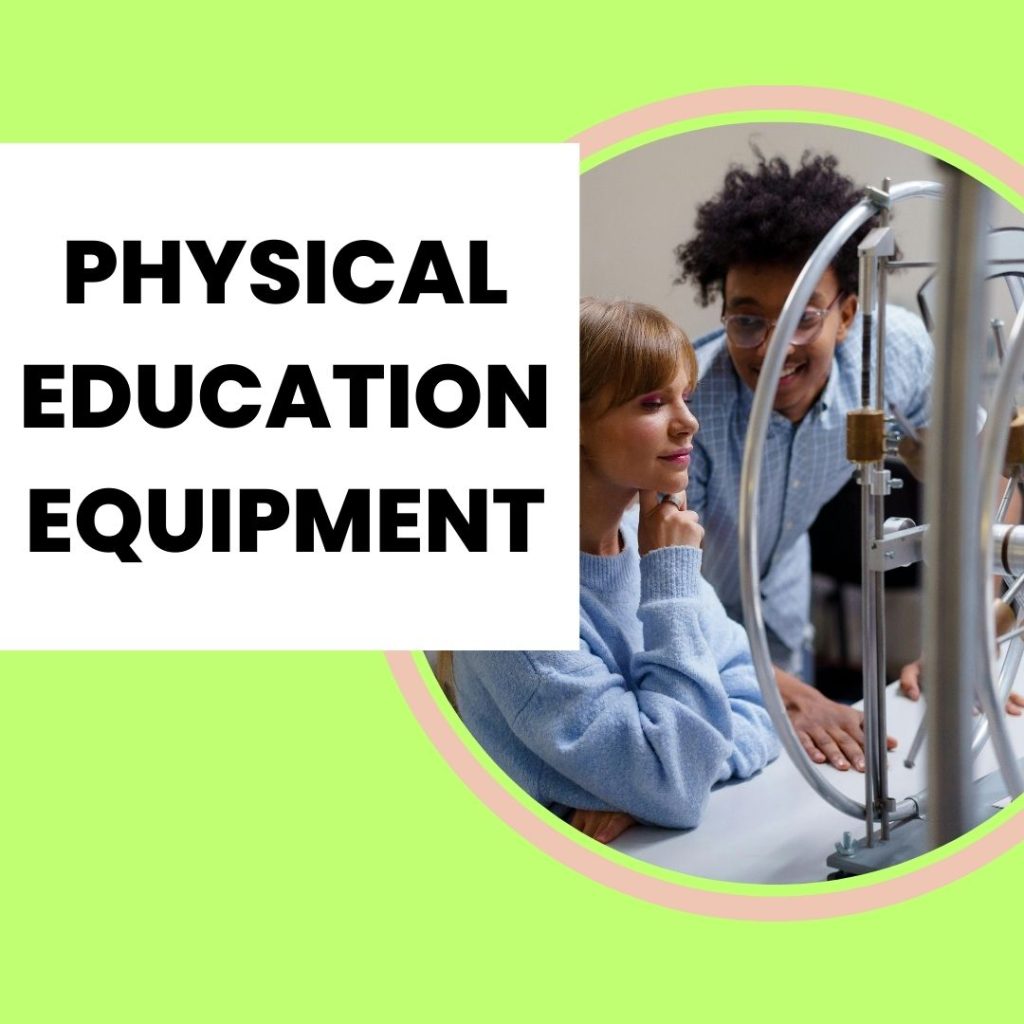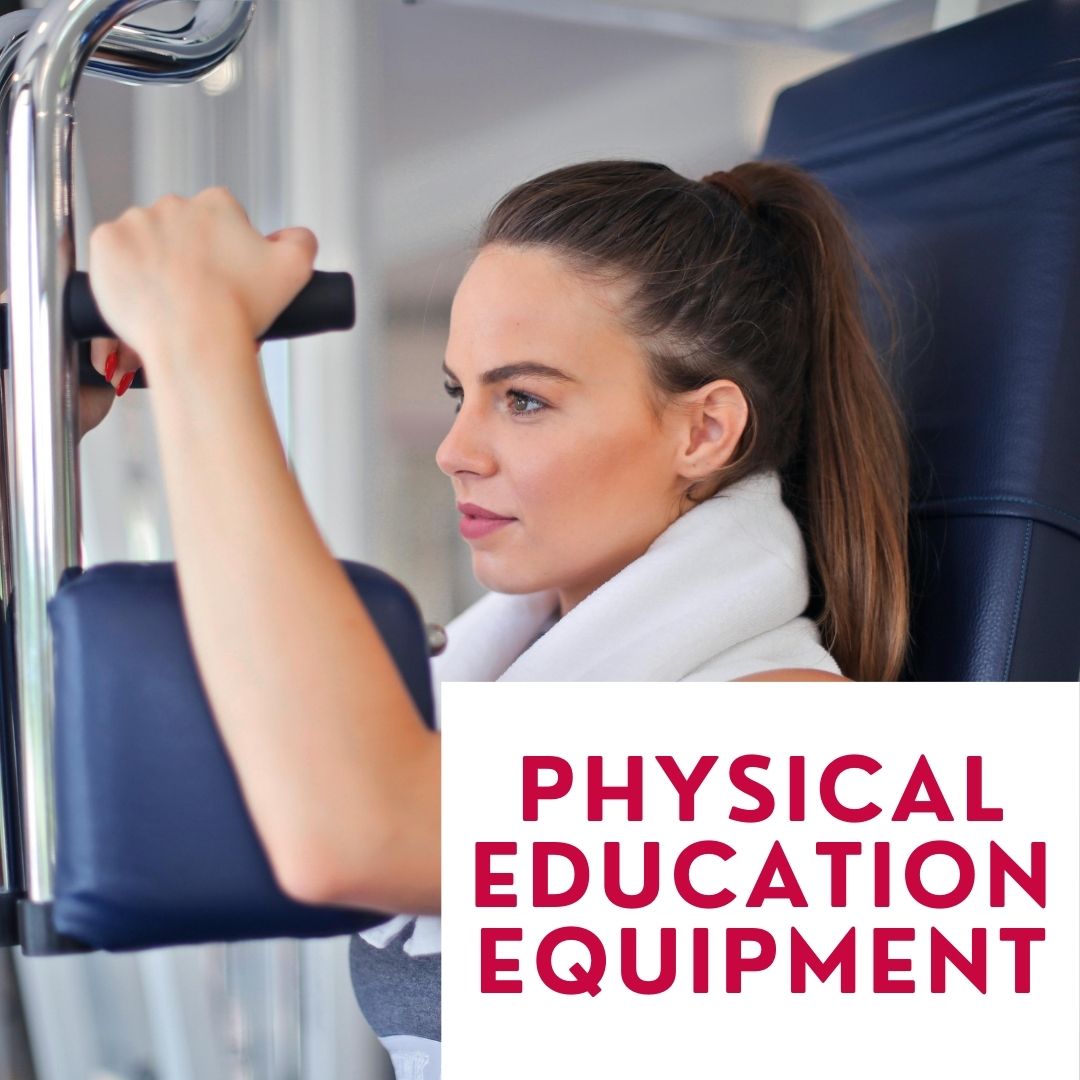Physical Education Equipment: Boost Your Better Fitness!
Physical education equipment encompasses the various tools and apparatus used to support physical activities in educational settings. These items facilitate exercise, sports, and fitness programs for students.
Physical education plays a crucial role in fostering the holistic development of students by encouraging a healthy lifestyle, promoting physical fitness, and increasing participation in sports. Adequate equipment is integral to PE classes, as it ensures that students engage in diverse and effective physical activities.
The types of equipment used range from basic items like balls and jump ropes to complex gear such as gymnastics apparatus and fitness machines. Safety, quality, and suitability for the age group are key considerations when selecting physical education equipment. This equipment not only assists in developing motor skills but also teaches teamwork and sportsmanship, making it a vital component of a student’s educational experience.
The Essentials Of Physical Education Equipment
Physical education equipment serves as the backbone for an effective PE curriculum. With the right tools, instructors can encourage students of all ages to engage in physical activity, develop their motor skills, and learn the importance of fitness. Choosing essential equipment ensures every class provides both fun and health benefits for students.
Selecting The Right Tools For Various Age Groups
Diverse age groups require different equipment to suit their development stages and abilities. Tailoring the selection of gear to cater to the needs of each group enhances safety and maximizes engagement.
- Elementary Age: Focus on soft-textured balls, jump ropes, and hula hoops for safe play.
- Middle School: Introduce small-sized sports equipment, like basketballs, and more complex games.
- High School: Offer standard sports equipment and incorporate strength-training gear.
Must-have Items For Every Pe Class
Some PE items are essential, regardless of the students’ age. These items form the core of any PE program and support a wide range of activities and games.
| Equipment Type | Description | Usage |
|---|---|---|
| Balls | Variety of sizes and textures | Skills development, team sports |
| Cones and Markers | For setting boundaries and obstacle courses | Agility drills, marking play areas |
| Jump Ropes | Individually or long ropes for group activities | Cardiovascular fitness, coordination |
When selecting PE equipment, always prioritize durability and versatility. Remember, the goal is to accommodate a variety of sports and activities that cultivate a lifelong love for physical activity.

Maximizing Limited Budgets For Pe Departments
Physical Education (PE) departments often face tight budgets that make it challenging to provide adequate equipment for students. Despite this, it is important for educators to ensure that classes remain engaging, dynamic, and beneficial for students’ physical health. The key lies in maximizing limited resources to support robust PE programs.
Creative Funding And Grant Opportunities
When it comes to stretching budgets, PE departments can tap into various creative funding and grant opportunities. This means looking beyond the school’s allocated funds and exploring alternative sources. Here are some strategies to consider:
- Partner with local businesses or organizations for sponsorships or donations.
- Apply for grants dedicated to promoting healthy lifestyles in schools.
- Organize community fundraising events such as fun runs or sports days.
- Use crowdfunding platforms to raise money for specific equipment needs.
Cost-effective Alternatives To Traditional Equipment
Investing in cost-effective alternatives to traditional equipment can drastically reduce expenses while still providing students with a fulfilling PE experience. Consider these alternatives:
- Use everyday items like socks for juggling or bean bags for target toss games.
- Incorporate bodyweight exercises that require no equipment.
- Research and invest in multi-purpose equipment that can be used for a variety of activities.
- Seek out gently used or donated equipment from other schools and sports teams.
Incorporating Technology Into Fitness Education
Physical Education (PE) has evolved with technology. Smart tools now create dynamic exercise experiences. Let’s explore how.
Wearable Fitness Trackers And Pe Classes
Wearable gadgets like fitness trackers are game-changers in PE. They provide real-time data on students’ health metrics. This feedback informs training and goals.
- Step counts motivate with clear targets.
- Heart rate monitors ensure safe exercise intensity.
- Sleep trackers help link rest and performance.
Apps And Software To Enhance Physical Training
Apps and software assist with tailored fitness plans. They suit different skills and needs. They are interactive and fun.
| App Type | Function |
|---|---|
| Activity Apps | Track workouts, provide feedback |
| Nutrition Trackers | Guide healthy eating for athletes |
| Training Software | Offer structured exercises |
Teachers use these tools for customized fitness programs. Students see clear progress and achievements.
Engaging Students With Diverse Equipment Options
Physical education is key to a child’s growth. Yet, children have unique skills and interests. We must make PE fun and accessible for all. Here’s how diverse equipment makes a difference.
Adaptive Equipment For Inclusive Activities
Some students need special gear to take part. Let’s make sure every child can play and learn. Here are tools to help:
- Beeping balls for students with vision issues
- Wheelchair-accessible sports items for mobility
- Grip-friendly bats and rackets for better control
Variety In Equipment To Cater To Different Interests
It’s not just about making PE possible, it’s about making it enjoyable. We offer an array of options:
| Sport | Equipment | Benefits |
|---|---|---|
| Basketball | Various ball sizes | Skills and coordination |
| Gymnastics | Mats and beams | Balance and flexibility |
| Track | Relay batons, hurdles | Speed and teamwork |
Outdoor Versus Indoor Pe Equipment
The quest for the perfect Physical Education (PE) gear calls for a careful balance. Different settings demand unique equipment selections. This balance hinges on the activities planned and their location. Let’s dive deep into the particulars of picking the right tools for Outdoor versus Indoor PE activities.
Choosing Equipment For Outdoor Activities
Outdoor PE classes embody adventure and excitement.
- Durability is key for outdoor gear. It must withstand the elements.
- Equipment like soccer balls and frisbees should be on top of your list.
- For field games, consider items such as cones, flags, and hula hoops.
- Ensure you have ample storage solutions like mesh bags or carts.
Remember, safety comes first. All outdoor activities require protective gear too. This includes items like knee pads and helmets.
The Best Gear For Indoor Fitness Challenges
Indoor PE gear caters to a different set of activities.
- Gym mats and balance beams are essential for gymnastics and floor exercises.
- Jump ropes and medicine balls offer great fitness workouts.
- For team sports, indoor-friendly basketballs and volleyballs are must-haves.
- Select equipment that won’t damage gym floors, such as soft-catch balls and foam pucks.
Indoor PE equipment often focuses on individual challenges and fitness goals. Each item should promote a safe and conducive environment for these activities.

Maintaining And Storing Pe Equipment
Maintaining and storing physical education equipment is crucial for any school or sports facility. Proper care ensures safety while maximizing the lifespan of gear. Organizing items effectively saves time and creates a better experience for both instructors and students.
Longevity Tips For Your Pe Gear
Give your PE equipment the care it deserves with these simple yet vital steps:
- Clean regularly: Remove dirt and sweat after each use.
- Conduct inspections: Check for damage and wear before and after activities.
- Follow manufacturer instructions: Adhere to recommended care guidelines.
- Use appropriately: Employ gear for its intended purpose to avoid unnecessary strain.
- Store indoors: Protect from extreme temperatures and moisture.
Organizational Strategies For Equipment
Stay organized and improve accessibility with these strategies:
| Strategy | Benefit |
|---|---|
| Label: Assign a specific spot for each item. | Quick identification and retrieval. |
| Use containers: Store small items in bins or bags. | Prevent loss and misplacement. |
| Implement a check-out system: Track equipment usage. | Maintain accountability. |
| Vertical storage: Utilize racks and hooks for space efficiency. | Maximize floor space. |
Regularly update inventory lists and allocate time for organizing weekly. Involve students in cleanup to teach responsibility.
Safety First: Gear And Precautions
When it comes to Physical Education, staying safe is as important as staying active. Injuries can happen, but the right gear and knowledge can make all the difference. Let’s explore the must-haves in safety equipment and how to use them properly.
Safety Equipment Essentials For Injury Prevention
Every sport or physical activity has its own set of safety gear. Knowing what’s essential can help prevent injuries. Here are some common items:
- Helmets for biking, football, or skateboarding protect your head.
- Padding guards knees and elbows in contact sports.
- Mouthguards shield teeth and gums.
- Supportive shoes offer stability and cushioning.
- Goggles keep eyes safe in the pool or on the court.
Remember to check each item regularly for wear and tear. Replace gear that no longer fits properly to ensure maximum protection.
Teaching Safe Equipment Usage
Using equipment correctly is key to preventing accidents. Educators and coaches play a crucial role in teaching these practices.
| Sport | Key Points for Safe Usage |
|---|---|
| Archery | Always face the target, use arm guards |
| Gymnastics | Check apparatus stability, use mats |
| Weightlifting | Lift with proper form, use spotters |
Encourage students to ask questions and practice under supervision until they are confident. Make sure everyone understands the importance of using equipment as intended.

Assessing The Impact Of Equipment On Fitness Goals
Physical Education (PE) tools play a crucial role in reaching fitness goals. Correct gear enhances workouts and keeps motivation high. Let’s explore how this equipment impacts progress.
Tracking Progress With Appropriate Tools
Success in fitness depends on measuring results accurately. Without the right tools, it’s like shooting in the dark. A digital pedometer tracks steps for walkers and runners. Heart rate monitors check how hard the heart works. Those lifting weights might use a digital log to track sets, reps, and weight lifted over time.
- Step Counters: Encourage more walking.
- Heart Monitors: Keep safe heart rate zones.
- Smart Scales: Show more than just weight.
- Apps: Combine all data for a full progress view.
Feedback Mechanisms And Adjusting Equipment Needs
Quality feedback is essential for improvement. Modern equipment comes with built-in feedback systems. For example, smart ropes count jumps and flash lights to regulate speed. Treadmills provide real-time feedback on pace and incline. Changing needs require adaptable equipment.
| Equipment | Feedback Provided | Uses in Adjusting Goals |
|---|---|---|
| Smart Ropes | Jump count, Calories burned | Enhance jump skills, burn more calories |
| Treadmills | Speed, Incline, Heart rate | Improve speed, increase endurance |
| Resistance Bands | Tension level | Adjust for strength gain |
Frequently Asked Questions For Physical Education Equipment
What Essentials Are Needed For Pe Classes?
Physical Education classes require basic equipment such as balls, jump ropes, cones, and mats. Each item is geared towards improving student fitness, coordination, and sports skills in a school setting.
How To Choose Quality Sports Equipment?
Select durable, safe, and age-appropriate equipment. Verify materials, brand reputation, and product reviews. Consider your specific curriculum needs and the intended frequency of use to ensure longevity and functionality.
Can Technology Enhance Pe Equipment?
Yes, technology adds value to PE through wearable fitness trackers and interactive game systems. These tools help monitor progress and engage students, ensuring a modern approach to physical education and activity tracking.
What Are Affordable Pe Equipment Options?
Affordable options include versatile items like foam balls, bean bags, and hula hoops. These are cost-effective and can be used in multiple activities, making them ideal for schools on a budget.
Conclusion
Selecting the right equipment is pivotal for effective physical education classes. Investing in quality gear invigorates student engagement and ensures safety. Remember, the ultimate goal is fostering a love for activity that lasts a lifetime. Embrace varied and versatile gear to keep PE sessions fresh and inclusive for every student.
Prioritize durability and value; your educational impact will echo in healthy, active futures.







